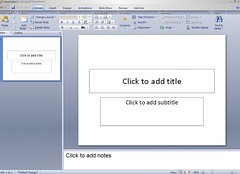 Deciding how to evaluate your students is often very difficult, and maintaining a fair and consistent strategy for grading student work will make your life much easier. Two of the most common types of grading systems are ‘norm-referenced’ and ‘criterion-referenced.’ These are by no means mutually exclusive, and many instructors feel most comfortable combining elements of each one.
Deciding how to evaluate your students is often very difficult, and maintaining a fair and consistent strategy for grading student work will make your life much easier. Two of the most common types of grading systems are ‘norm-referenced’ and ‘criterion-referenced.’ These are by no means mutually exclusive, and many instructors feel most comfortable combining elements of each one.
Norm-Referenced Systems
Definition
In norm-referenced systems students are evaluated in relationship to one another (e.g., the top 10% of students receive an A, the next 30% a B, etc.). This grading system rests on the assumption that the level of student performance will not vary much from class to class. In this system the instructor usually determines the percentage of students assigned each grade, although it may be determined (or at least influenced) by departmental policy.
Advantages
Norm-referenced systems are very easy for instructors to use. They work well in situations requiring rigid differentiation among students, where, for example, due to program size restrictions, only a certain percentage of the students can advance to higher level courses. They are generally appropriate in large courses which do not encourage cooperation among students.
Disadvantages
One objection to norm-referenced systems is that an individual’s grade is determined not only by his/her achievements, but also by the achievements of others. In a large non selective lecture class, you can be fairly confident that the class is representative of the student population, but in small classes (under 40) the group may not be a representative sample. One student may get an A in a low-achieving section while a fellow student with the same score in a higher-achieving section gets a B.
A second objection to norm-referenced grading is that it promotes competition rather than cooperation. When students are pitted against each other for the few As to be given out, they’re less likely to be helpful to each other.
Criterion-Referenced Systems
Definition
Norm-referenced tests measure students relative to each other. Criterion-referenced tests measure how well individual students do relative to pre-determined performance levels. Teachers use criterion-referenced tests when they want to determine how well each student has learned specific knowledge or skills.
In criterion-referenced systems students are evaluated against an absolute scale, normally a set number of points or a percentage of the total (e.g., 95-100 = A, 88-94 = B, etc.). Since the standard in this grading system is absolute, it is possible that all students could get As or all students could get Ds.
Advantages
Students are not competing with each other and are thus more likely to actively help each other learn. A student’s grade is not influenced by the caliber of the class.
Disadvantages
It is difficult to set a reasonable standard for students without a fair amount of teaching experience. Most experienced faculty set criteria based on their knowledge of how students usually perform; thus, criterion-referenced systems often become fairly similar to norm-referenced systems.
Other Systems
Some alternate systems of grading include contract grading, peer grading, and self-evaluation by students.
In contract grading instructors list activities students can participate in or objectives they can achieve, usually attaching a specified number of points for each activity (e.g., book report = 30 points, term paper = 60 points). Students select the activities and/or objectives which will give them the grade they want and a contract is signed. It is advisable to have qualitative criteria stated in the contract in addition to listing the activities.
In some classes, a portion of a student’s grade is determined by peers’ evaluation of his/her performance. If students are told what to look for and how to grade, they generally can do a good job. The agreement between peer and instructor rating is about 80%. Peer grading is often used in composition classes and speech classes. If used, it should always be done anonymously.
Students can also be asked to assess their own work in the class and their assessment can be a portion of the final grade. This method has educational value since learning to assess one’s own progress contributes to the university’s goal of preparing students to be life-long learners.
A research analysis found that the percentages of self-assessors whose grades agree with those of faculty graders vary from 33% to 99%. Experienced students tend to rate themselves similarly to faculty while less experienced students generally give themselves higher grades than a faculty grader. Students in science classes also produced self-assessments which closely matched faculty assessment. If self-assessment is used, the instructor and student should meet to discuss the student’s achievement before the self-evaluation is made.
These and additional resources are available online at the Center for Teaching and Learning at the University of Minnesota, Twin Cities.
What do you find to be the most effective evaluation strategies for your students? Do students favor one form while you favor another? Why?




